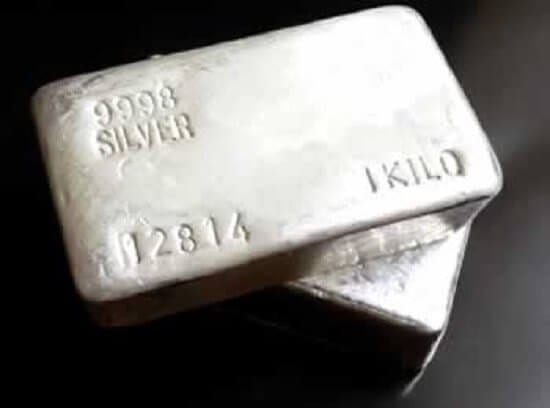Gold to Silver Price Ratio – A Look at the Past 20 Years
28/06/2018Daniel Fisher
Free & fully insured UK Delivery. Learn more
Secure & flexible payments. Learn more

Buyback Guarantee Learn more
While both gold and silver share the banner of precious metals, they’re two very distinctive assets. The price of gold and the silver price certainly don’t move up and down in perfect harmony. In fact the ratio between the two prices can provide valuable insight into the possible future price movements. The gold to silver price ratio has historically been an important factor that influences buying decisions taken by investors when investing in precious metals. There are a few factors that drive investors to buy gold or silver. Most investors do not consider investing in gold or silver in isolation. It is usually a decision taken as a part of a concerted strategy to invest in asset classes that minimise risk and maximise gains for the investor. In doing so, an investor who is creating a portfolio of investments to build wealth over the long term will have an investment window of at least six to ten years to remain invested in certain asset classes.
Like a palette of paints available to the painter, the investor uses several asset classes to construct a diversified portfolio. These asset classes could consist of equity funds, debt funds, direct equity, bonds, real estate, cash deposits and precious metals, to name a few. There are many views on how much investment should be allocated to precious metals during an asset allocation exercise. Many investment advisors recommend an allocation of 10 to 15% within a portfolio. However, there are a few compelling reasons for investors to invest in gold and silver.

The spot price of gold has risen steadily over the years
Investors often use precious metals as a hedge against market forces. Gold is a popular choice to hedge against both inflation, as well as interest rates. On the other hand, we often see investors flocking to buy gold or silver when capital markets take a plunge globally. In recent times, the 2008 financial crisis and 2011. This was evident during the 2011 financial crisis when global capital markets crashed due to S&Ps downgrade of the US economy. The market crash prompted investors to move their money away from stock markets, and invest in gold. On August 22, 2011, the spot price of gold touched a record $1,900.
Download our free Insider’s Guide to Gold & Silver Investment here
Situations like these simply mean that prices of gold have surged out of control due to astronomically high market demand. During a time like this, if silver prices did not respond adequately to the shift in the market, the gold-silver price ratio would rise and the spread would widen. But this is not the case. Trends show us that the spread falls. For example, the current ratio of gold to silver is around 75: 1. This means that gold is 75 times dearer than silver. It would take 75 ounces of silver to purchase 1 ounce of gold. Now, if the price of gold continued to rise unabated, without a proportional rise in silver prices, the gold-silver price ratio would surge upward, as gold would then become several times dearer than it is now when compared to silver.

When silver prices outperform gold in a bull market, the price ratio falls
However, it is important to note that when precious metals enter a bull market phase, silver usually outperforms gold. Since silver is more affordable, demand for it remains higher, driving the prices of silver higher. In recent years, silver price movements are not dependent only on investor demand. Industrial demand and scanty supplies have been pushing silver prices up. When this happens, the gold-silver spread or the difference between the prices of the two metals reduces, and the ratio falls. A look at the 20-year gold-silver ratio tells us that in 2011 when gold prices were at their highest, the gold-silver ratio fell to a record low of 30.48. On August 22, 2011, silver rose to more than $42 per ounce from a low of around $28 on 1st February 2011. This was the same date when gold touched its record high.
In 2016, gold prices were above $1400 an ounce, and the gold-silver price ratio was around 65. A close look at 2011 shows us that the price curve of silver outperformed against gold during that period. Therefore, we can say that the gold-silver price ratio has an inverse relationship with market rises. As a gold or silver investor, it is important to understand this relationship and explore the drivers responsible for the rise and fall in gold and silver prices.
At Physical Gold, our investment advisors do not give you tips on how to time the market. We believe that investments in precious metals are best done by understanding the fundamentals of the market and making an educated decision on when and how to invest. Call us now on 020 7060 9992 or get in touch with our team online to find out more about price movements in the gold and silver markets.
Image credits: Public Domain Files and Wikimedia Commons
Live Gold Spot Price in Sterling. Gold is one of the densest of all metals. It is a good conductor of heat and electricity. It is also soft and the most malleable and ductile of the elements; an ounce (31.1 grams; gold is weighed in troy ounces) can be beaten out to 187 square feet (about 17 square metres) in extremely thin sheets called gold leaf.
Live Silver Spot Price in Sterling. Silver (Ag), chemical element, a white lustrous metal valued for its decorative beauty and electrical conductivity. Silver is located in Group 11 (Ib) and Period 5 of the periodic table, between copper (Period 4) and gold (Period 6), and its physical and chemical properties are intermediate between those two metals.